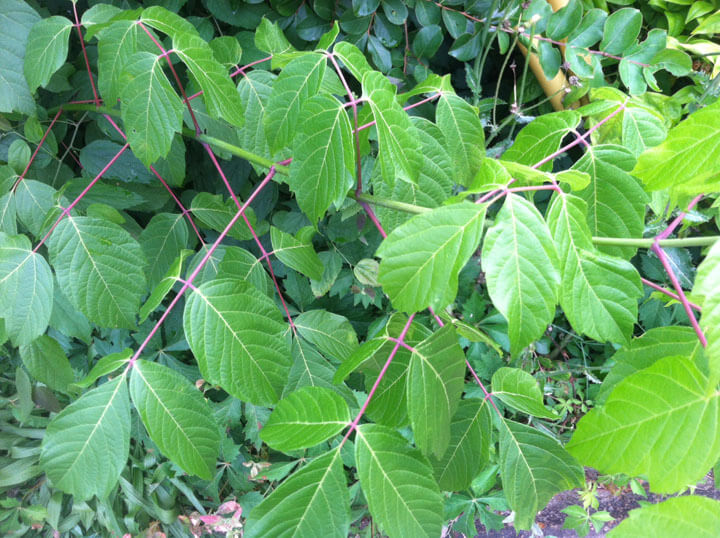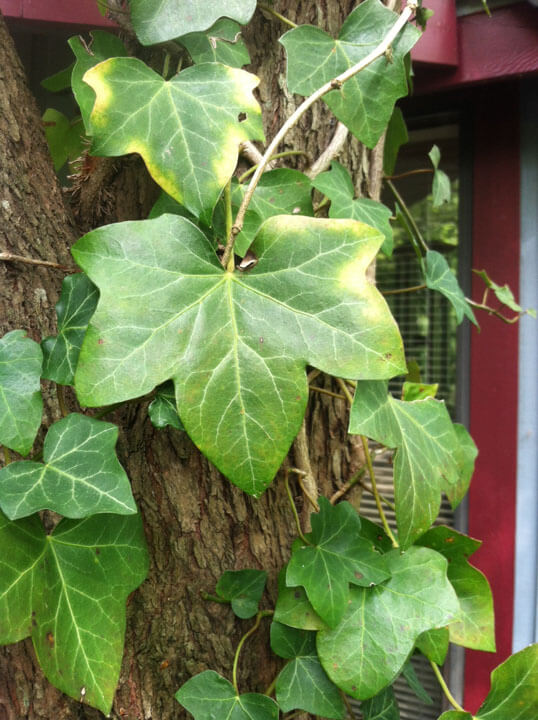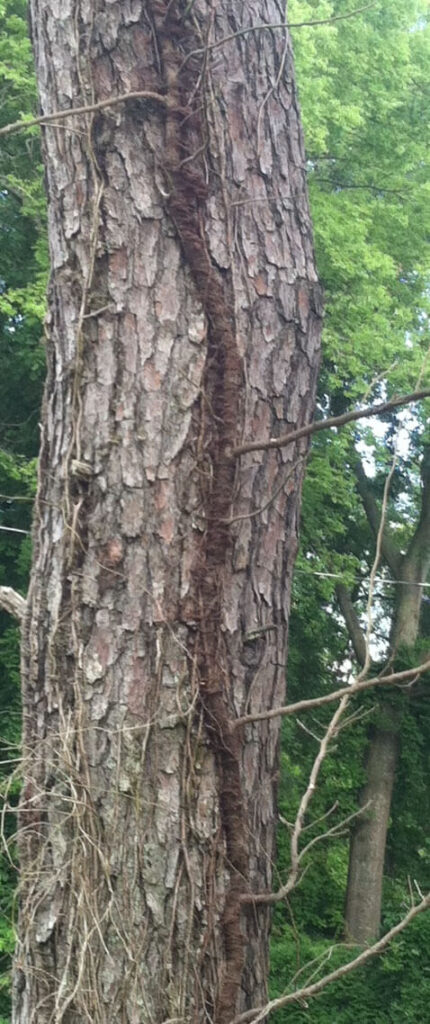Every gardener will encounter poison ivy at some point. It’s an important plant to be able to identify – even when it doesn’t have leaves. All parts of the plant are poisonous. While some people may not have a reaction to this plant, many will get an itchy, painful rash.
The substance (uroshiol) that causes the rash or blisters can be transferred from pets or clothing to your skin and also cause a reaction. So knowing that the plant is in your yard or in an area where you walk your dogs is important.
There are some people who have been known to have reactions simply from being around a fire that had poison ivy in it. A reaction in the lungs can be extremely dangerous, so it is recommended that you never burn the plant, roots, or berries.
Remember – even when the plant is dead, you can still have a reaction to the oil.
Identification
- Vine (can sometimes be a small upright single- or multi-stem shrub)
- 3 leaves
- Leaves are smooth, sometimes may be notched (but not serrated)
- Berries are white
- In fall, leaves are bright red
- Vine appears hairy as it has a lot of aerial roots coming from it
Not To Be Confused with Box Elder (Acer negundo)
I used to see this tree and think it was poison ivy. When boxelder is very young, it very much resembles the plant, but the biggest difference is the arrangement of the leaves (box elder leaves are opposite whereas poison ivy leaves are alternate) and the petioles of the leaves are often red or pink on box elders.
Some people also get confused about Virginia creeper and poison ivy. I think this is largely because it is a vine. Virginia creeper has five leaves and looks very different than poison ivy.
Poison Ivy as a Wildlife Food
However, it is also an important wildlife food source. Many birds eat the berries, and some mammals eat the berries, leaves, and stems. Insects and caterpillars also feed on poison ivy as well as bees and flies that get pollen from the flowers.
How to Get Rid of The Plant
I wouldn’t recommend pulling up poison ivy by hand, even with gloves, as the oil can transfer to other clothing easily unless you are extremely careful and throw out your gloves when you are done. To me, it’s not worth the risk.
In my opinion, the use of an herbicide like Roundup is the best method. That way you avoid touching it entirely. Follow the directions on any herbicide very carefully. This is the only thing in my garden that I use herbicides for, but it works well and keeps me from a painful rash.
Another method is to dig up the entire plant (if it’s small) and dispose of it. You’ll have to get all of the roots or it will regrow. For larger vines wrapped around trees, try cutting off the vine at the base continually and spraying the base with an herbicide. You may have to repeat this.
If you think you have come into contact with poison ivy, wash the skin with soap and cold water as soon as possible. There are products that may help remove the oil (such as Tecnu), but prevention is the best method. Even if you think you won’t have a reaction to the oil, be careful. A sensitivity to poison ivy can develop at any age.
Resources
- http://ohioline.osu.edu/hyg-fact/1000/1015.html
- http://news.psu.edu/story/185661/2003/10/01/poison-ivy-wildlife-food-one-first-plants-change-color
- http://www.nps.gov/acad/naturescience/poisonivy.htm
- http://www.wikihow.com/Identify-Poison-Ivy








